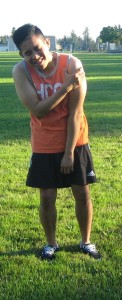The shoulder is comprised of the collarbone, shoulder blade and upper arm bone. Workouts that involve the upper body or a sport that requires the arms puts the shoulders at risk for injuries. In case the individual ends up with shoulder pain after a workout routine, he/she must stop right away and consult a doctor. Remember that pain indicates that there is something wrong and only a doctor can determine the exact cause.
Shoulder joint tear
Constant shoulder movement or acute form of trauma can cause a tear in the shoulder joint. The trauma might include falling on the arm when it is outstretched, abrupt pulling motion or a direct blow to the shoulder as well as violently reaching overhead.
Individuals who engage in sports that involve throwing as well as wrestling face the highest risk. The typical signs and symptoms include the following:
- Pain
- Loss of strength
- Diminished range of motion
- Instability of the shoulder
- Popping, locking, catching or grinding in the affected shoulder

The treatment usually includes the administration of an anti-inflammatory medication as well as physical therapy and even surgery.
Rotator cuff tendinitis
The tendons in the shoulder become inflamed. Those who engage in repeated throwing are at high risk, but lifting weights overhead, pitching in baseball, regular swimming or playing tennis can also cause the condition.
The symptoms include pain while moving the affected shoulder, difficulty when using the affected shoulder and weakness. The treatment usually involves rest, application of ice, non-steroidal anti-inflammatory drugs (NSAIDs) and physical therapy. In case the pain is severe, the doctor will prescribe steroid injections. Surgery might be required if the rotator cuff is fully torn.
Impingement of the shoulder
This is one of the typical reasons why some adults end up with shoulder pain. This condition is characterized by pressure on the rotator cuff from an area of the shoulder blade when the arm is lifted.
Athletes who typically experience this are those who play tennis, swimming or baseball due to the frequent lifting of the arms above the head. The symptoms include the following:
- Shoulder pain
- Radiating pain away from the shoulder
- Localized tenderness and swelling
- Stiffness
Once the condition worsens, the individual will end up with diminished range of motion and strength. In advanced cases, there is severe tenderness, limited movement and pain. In addition, even frozen shoulder can also occur.
The treatment typically starts by allowing the affected shoulder to properly rest, stretching exercises, local cortisone and anesthetic injections into the affected shoulder as well as non-steroidal anti-inflammatory drugs (NSAIDs). Once these treatment options fail, surgery is required.
Dislocated shoulder
Shoulder dislocations are considered as traumatic injuries. The high mobility of the shoulder makes it prone to dislocation where it is forced out of the shoulder joint. A direct blow on the shoulder or violent pull can trigger this.
The symptoms include a popping sensation, deformity, severe shoulder pain, swelling and bruising. The commonly used treatment includes manipulation of the shoulder. Once this is performed, this is followed by immobilization, medications, physical therapy and even surgery in some cases.
